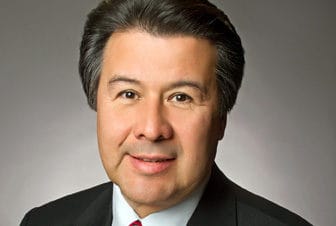COMMENTARY: Capital outlay funding is a controversial and difficult process. The demand for state money far exceeds the funds available; for the 2018 legislative session, state and local governments have requested over $2 billion for capital outlay funded by general obligation and severance tax bonds.
The Department of Finance and Administration (DFA), the General Services Department and legislators are responsible for prioritizing these requests and allocating funds, but frequently find themselves missing the tools necessary to do so.

Courtesy photo
Pete Campos
Future generations and those new to politics may not understand the power that their legislators have when allocating capital outlay. While all New Mexicans suffer when capital outlay funds are spent on short-term projects that do not address long-term community needs, future generations are some of the most affected. If failing systems are not appropriately repaired now, our children and grandchildren will pay the price.
The bonds that fund capital outlay are repaid with money of the future, so we must ensure that capital outlay benefits both the present and the future. In some cases, such as the purchase of technology or vehicles, our investments become obsolete before the bonds used to finance them are paid off. While such purchases may garner public praise, they do not address pressing but less conspicuous infrastructure needs.
Capital outlay must be used to prepare our infrastructure for the future and to increase our public health and safety. If we do not consider this, we risk further harming our sewers, waterways and roads with unsustainable additions. Piecemeal repairs funded by capital outlay can be strenuous on a water system or roadway. Mixing old systems with new technologies — placing the newest laptops on lagging school computer networks, installing high-powered pumps on failing waterlines — creates new problems and eats away at the return on our investments.
Perhaps more concerning than misdirected but well-intentioned efforts with capital outlay is the fact that significant amounts of capital outlay funding remain unspent for lengthy periods of time, and sometimes are not expended at all.
Consider that, from the 2014 capital outlay authorizations dedicated to water projects, nearly $20 million remains unexpended. As of December 2015, more than $600 million for more than 1,500 projects remains outstanding because money is appropriated for projects that are not ready, not wanted, and/or not eligible for capital outlay.
While legislators are encouraged to review current balances with local entities to ascertain why funding is not used and how problems can be rectified, would it not be better if we had tools that helped us to fund actionable projects that prevent problems, provide the most basic needs of life, preserve our culture and propagate it in the future?
In Senate Bills 148 and 149 and Senate Joint Memorial 18, I propose a variety of tools that will make the capital outlay process more simple, more formal and more efficient. These include an interim committee that could research capital projects not included in the statewide capital improvements plan and establish objective criteria for including projects in the plan; a new division of the DFA to assist in the planning, administering and tracking of capital outlay projects utilizing a central database, ensuring that funds are used in a timely and appropriate manner; and an expansion of the Capitol Buildings Planning Commission to allow it to more easily plan and fund capital projects.
The Legislature would still be central to the process, but busy legislators would have some much-needed help. They would have accurate information regarding the prices of equipment or the value of a dollar in a project available at their fingertips. With these tools, capital outlay becomes a less daunting and more informed process for all involved, and we can make the most of the precious limited money that we have available to address our critical infrastructure needs.
Pete Campos, a Democrat from Las Vegas, represents District 8 in the New Mexico Senate. Agree with his opinion? Disagree? We welcome your views. Learn about submitting your own commentary here.
